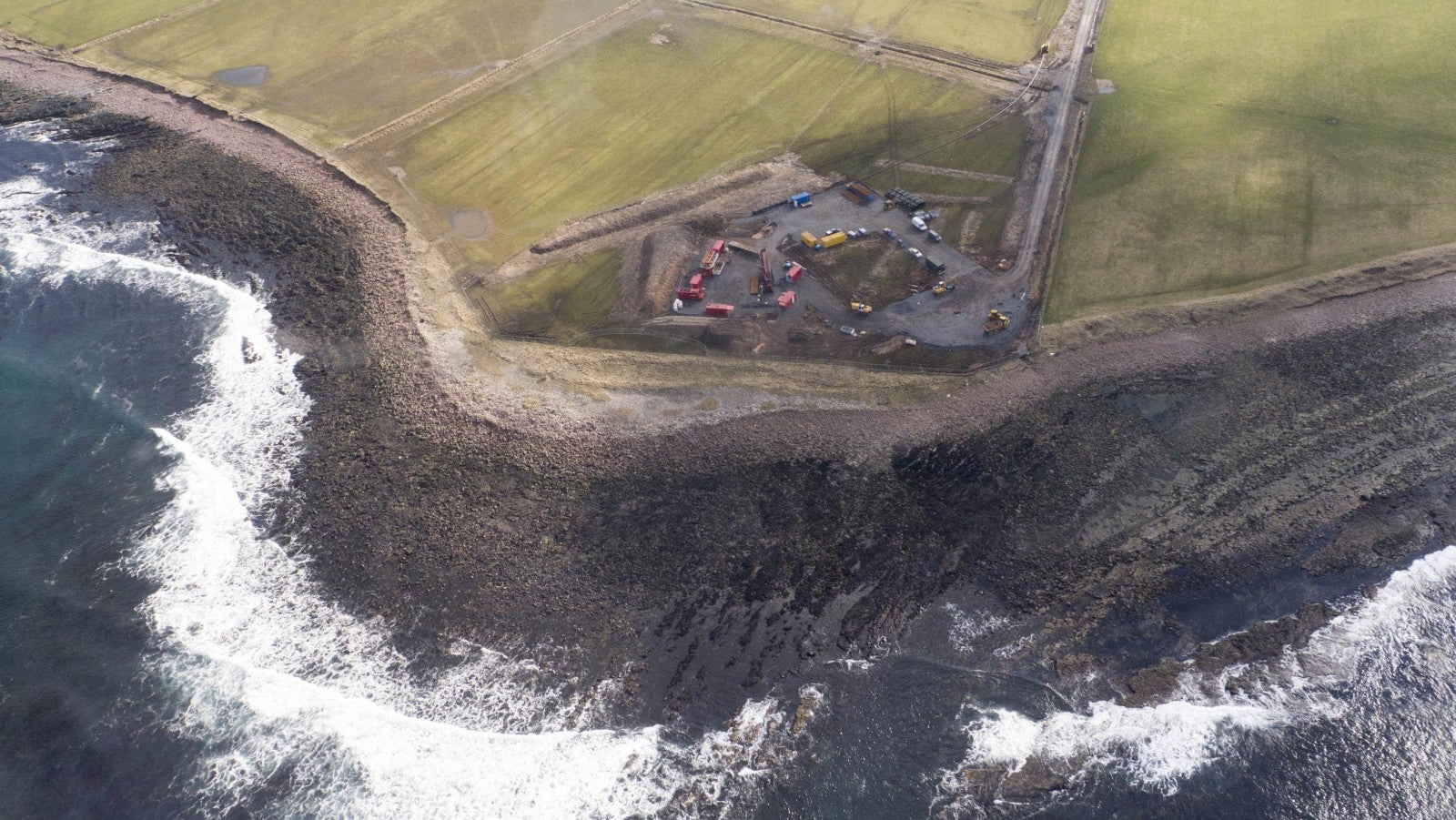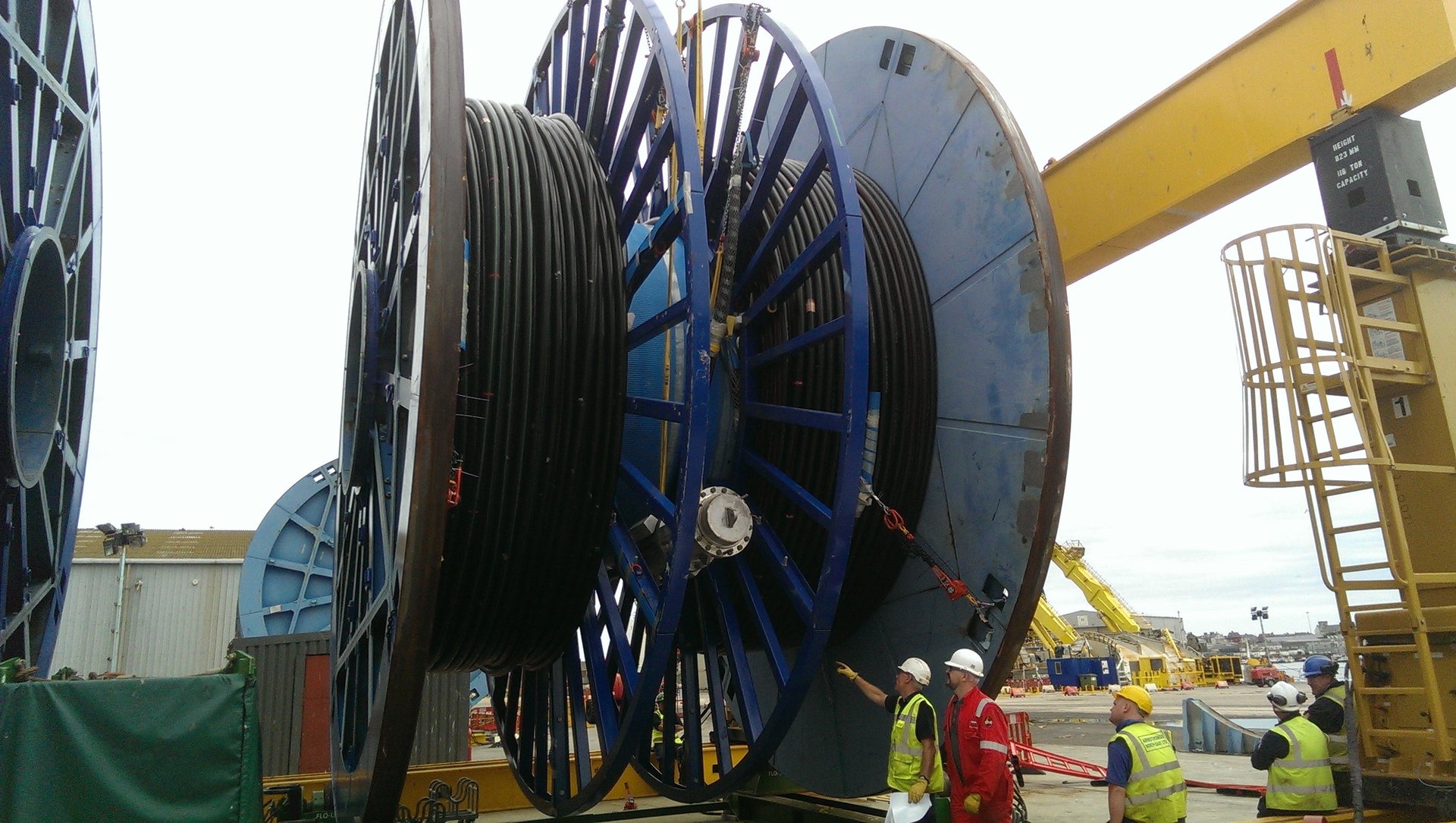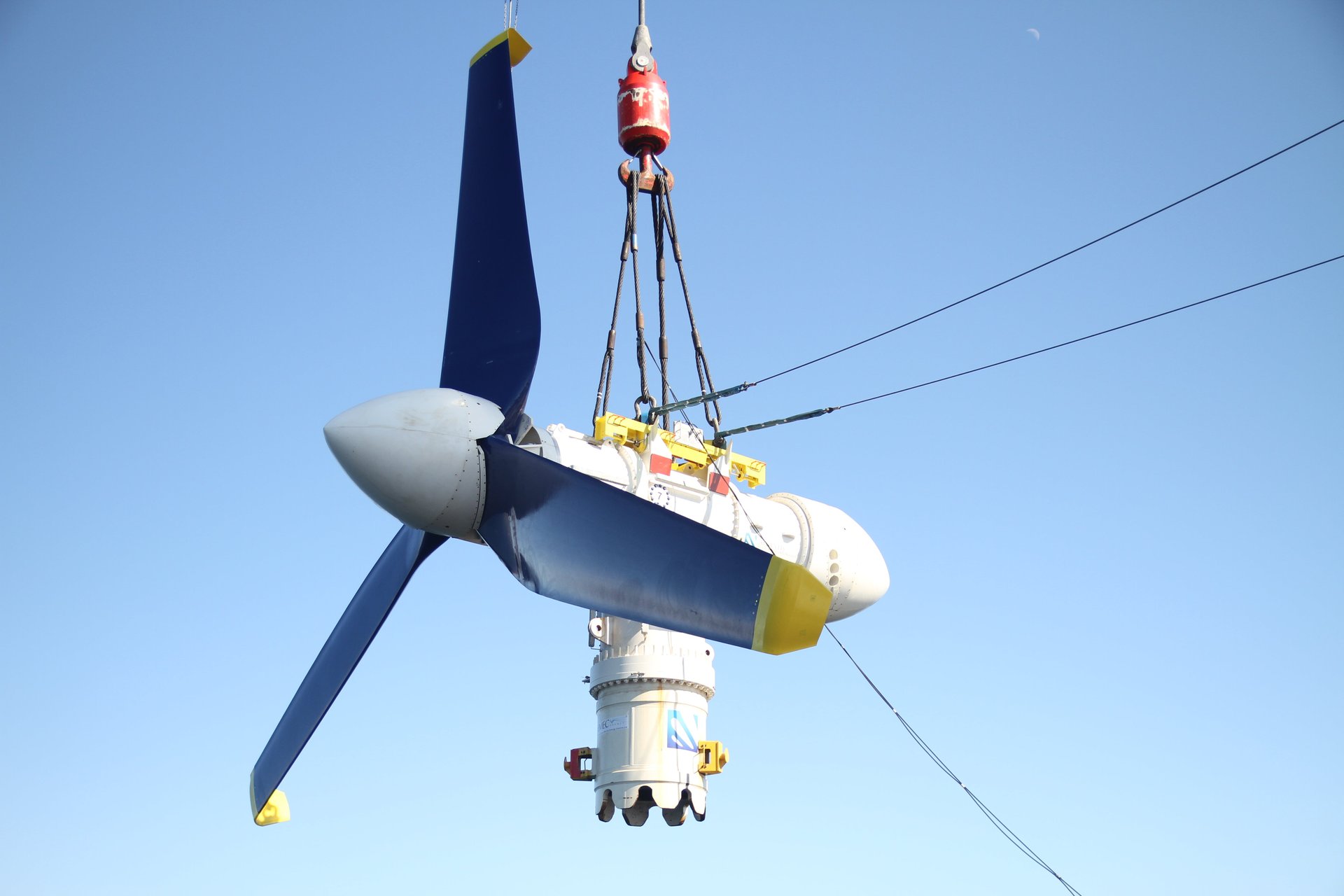The latest innovation in renewable energy is an army of huge, sunken turbines in Scotland’s wild seas
Take a map of Great Britain and draw a line between its extremities. Far to the southwest is Land’s End. In the northeast corner, your pen will fall into the sea at the windswept tip of Scotland, not far from John o’Groats. That’s the future site of the world’s biggest array of tidal turbines—essentially, undersea windmills turned by the chilly waters.


Take a map of Great Britain and draw a line between its extremities. Far to the southwest is Land’s End. In the northeast corner, your pen will fall into the sea at the windswept tip of Scotland, not far from John o’Groats. That’s the future site of the world’s biggest array of tidal turbines—essentially, undersea windmills turned by the chilly waters.
Intuitively, humans look at the ocean and see an awesome energy: the inexorable suck and return of tides; the swell and crash of 60-foot waves. In the increasingly urgent pursuit of alternatives to fossil fuels, ocean energy is a clean-tech holy grail.
But harnessing that power has been an equally awesome challenge. The quest thus far has involved university professors with tanks full of prototypes, and hugely expensive undersea experiments. Now, with the estimated £1 billion ($1.5 billion) MeyGen turbine project under construction in Scotland’s Pentland Firth—and others like it on the way—the promise of tidal energy has never been closer.

MeyGen is still under construction, with undersea cables being laid and substations built. Once all 269 turbines are in place, MeyGen will generate 400 megawatts of power—enough for 175,000 homes, says Tim Cornelius, the CEO of Atlantis Resources, which is building the turbine array.
Tidal turbines are likely to avoid much of the public backlash against wind turbines, because they’re sunken and therefore unseen. Water is 800 time denser than air, giving more of a push to the blades. And tides are extremely predictable, meaning Atlantis can avoid the problems of intermittent generation that solar and other renewables typically face.
Tidal power isn’t the only way the ocean is being tested as a source of renewable energy, but it’s the furthest along in terms of development. Projects like MeyGen are relatively new, but tidal turbines in man-made lagoons, where a difference in height inside and outside provides the water’s driving force, already provide power to towns in France and Korea. Wales is planning a series of such projects, with the first £1-billion lagoon planned for the town of Swansea.
Wave-power technologies, meanwhile—none of which are yet commercially available—have taken many experimental forms. Some are long and snake-like, using an up-and-down motion to push pistons, which in turn spin turbines. Others use swinging flaps, or rolling and spinning motions, to try to coax power out of the waves.

Neil Kermode runs a wave and tidal research center in the Orkney Islands, north of the Pentland Firth. (MeyGen’s turbine installers “cut their teeth with us,” he notes.) Two years ago, both wave and tidal technologies were being tested there with equal enthusiasm (paywall). But since then, the fortunes of the two segments of the ocean energy industry have diverged. Last year saw a “stutter in confidence” in the wave sector, with developers running out of money and patience before reaching a commercial stage, Kermode said.
He now points to MeyGen and Paimpol, a tidal turbine farm under development in France, as frontrunners in the race to raise power from the deep.
Good timing
Even within the alternative energy industry—and especially in the UK, which has been dialling back subsidies for the sector—it’s rare to meet someone as bullish on renewables as Atlantis’ Cornelius.
“It’s a good time to be in offshore renewables in the United Kingdom,” Cornelius tells Quartz. He means this both metaphorically and quite literally.
“We feel very positive about it. Why? Because intuitively it makes sense, it’s coming at exactly the right time, it’s retaining a knowledge base in the UK, driving jobs… It’s making use of [an] existing supply chain” and infrastructure, he says.
Indeed, the recent crash in oil prices, and the resultant cutbacks from drillers in the nearby North Sea, have benefited the project, Cornelius said. Skilled offshore workers in Scotland are finding themselves unemployed. Equipment is going cheap. Cornelius himself used to work in oil and gas.
“All the vessels we use are vessels we used to work on [in the oil industry], that three years ago we couldn’t afford, and now are desperately chasing our work,” he says.
But it hasn’t been easy to get to this point, and finishing the job won’t be cheap. (Remember that £1 billion figure? That’s what Cornelius estimates it will take in capital expenditures to get MeyGen up and running.)
Government support has been crucial, in terms of both direct investment and subsidy.
Ocean projects have been spared the subsidy cuts made by the UK’s current administration, which since coming to power last May has laid waste to most of the support mechanisms formerly underpinning the country’s renewable energy sector. But some might look at the cuts to onshore wind, solar, and other forms of renewable generation, and worry.
Scottish power

Scotland, though, has thrown its support behind renewables. It’s already shooting to produce enough renewable energy by 2020 to theoretically satisfy all its power needs (it won’t turn off all the fossil-fuel plants, just export the excess). Scottish Renewables, an industry body, is hoping the government will set a target of getting half of all energy—not just power, but heat and transport too—from renewables by 2030.
Control over the country’s energy future is partly devolved from the UK’s central government to Scotland’s separate administration, explains Nick Sharpe, a spokesman for Scottish Renewables. But there are tensions. Scotland controls planning decisions and land (and water) use in its territory. But the central government in Westminster controls subsidy budgets.
Right now, Scotland is a world leader in ocean power, and is planning a big build-out of its wind capacity with offshore farms and even an experimental floating installation. Later this month, the international ocean energy industry will meet at a conference in Edinburgh, discussing both wave and tidal developments.
Cornelius, an Australian with a background in marine biology, commercial diving, and submarine rescue, said that while people harp on the difficult conditions—rough seas, shifting sands, new tech, and the difficulty of getting power onshore—the offshore industry is robust enough to handle it.
“People say ‘Oh, isn’t it really challenging to try and put a turbine in the Pentland Firth, [in] deep waters offshore?’” he said. “It’s nothing compared to trying to drill in 6,000 meters of water in Brazil… [and] oil and gas guys are very, very good at finding solutions.”
Atlantis says it expects the MeyGen project to start delivering power to the grid in 2016. It also will begin construction on another tidal-turbine project, in the nearby Sound of Islay, later this year.
Correction (Feb 12): An earlier version of this story said the MeyGen project would have 250 turbines and power 250,000 homes.